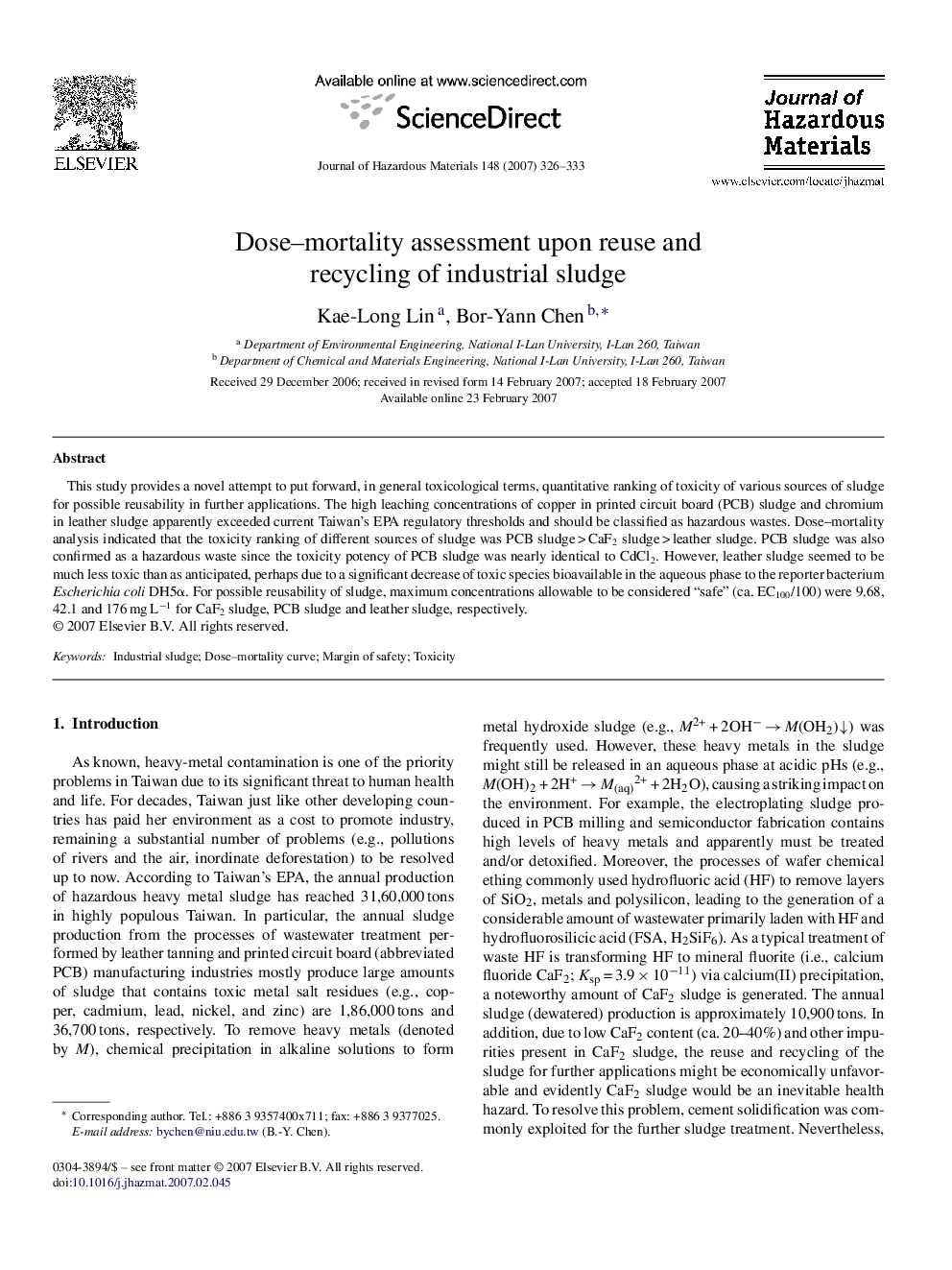| Article ID | Journal | Published Year | Pages | File Type |
|---|---|---|---|---|
| 584410 | Journal of Hazardous Materials | 2007 | 8 Pages |
Abstract
This study provides a novel attempt to put forward, in general toxicological terms, quantitative ranking of toxicity of various sources of sludge for possible reusability in further applications. The high leaching concentrations of copper in printed circuit board (PCB) sludge and chromium in leather sludge apparently exceeded current Taiwan's EPA regulatory thresholds and should be classified as hazardous wastes. Dose-mortality analysis indicated that the toxicity ranking of different sources of sludge was PCB sludge > CaF2 sludge > leather sludge. PCB sludge was also confirmed as a hazardous waste since the toxicity potency of PCB sludge was nearly identical to CdCl2. However, leather sludge seemed to be much less toxic than as anticipated, perhaps due to a significant decrease of toxic species bioavailable in the aqueous phase to the reporter bacterium Escherichia coli DH5α. For possible reusability of sludge, maximum concentrations allowable to be considered “safe” (ca. EC100/100) were 9.68, 42.1 and 176 mg Lâ1 for CaF2 sludge, PCB sludge and leather sludge, respectively.
Related Topics
Physical Sciences and Engineering
Chemical Engineering
Chemical Health and Safety
Authors
Kae-Long Lin, Bor-Yann Chen,
